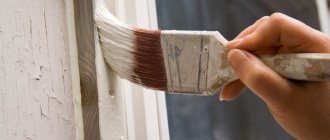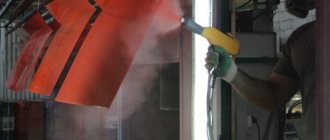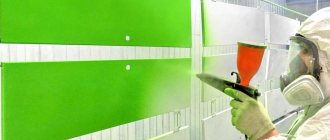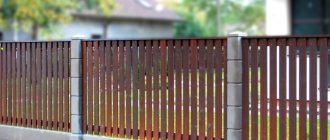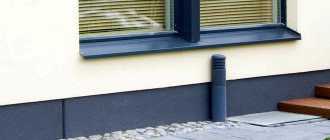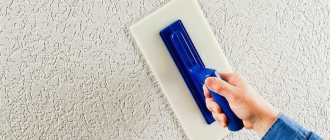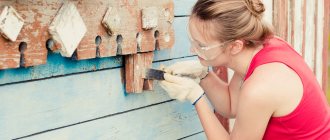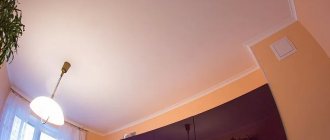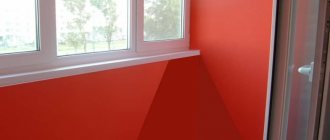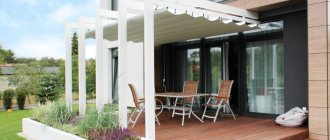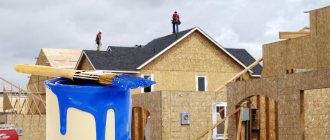Features of the floor
Every year, summer residents have to face such a problem as replacing terrace floor boards. As mentioned earlier, atmospheric conditions can damage even strong coatings. Sometimes wooden floors can be saved by proper installation, which provides a gap of 2-4 mm between the boards.
But even with ideal installation, it is necessary to treat the wood with paints and varnishes to preserve the floor from destruction. They are selected depending on what type of wood the flooring is made of.
Basically, they prefer to buy floor boards from coniferous trees, in particular larch. Those who have the opportunity order a decking board for this purpose.
Before covering the veranda with paint, it is very important to properly prepare it for this process. To do this, it is necessary, first of all, to treat the floor and other structural elements with a primer and antiseptic. In this case, it is possible to use the object for as long as possible
Any paint coating intended for wood in an open structure can last about three years.
Regular enamel paint or varnish is only suitable for indoor work. To cover the floors of open verandas, it is better to use terrace oil, which does its job perfectly.
Choosing material for the veranda
The best option for covering a wooden veranda is paint. However, when choosing this material, you need to pay attention to the fact that you should buy a special paint composition for the floor. To paint the remaining parts of the structure, you can use any paint intended for exterior woodwork.
Coniferous wood is often used in the construction of verandas. They are the most affordable material among tree species. In addition, they have natural protection from water - these are the resins with which the wood is impregnated.
For a coniferous decking board, you will need a significantly smaller amount of paint to cover it.
Acrylic latex paint
This coating has recently become increasingly popular among consumers. It has good reviews about its performance properties. In addition, the paint is easy to work with: it has no odor and is not harmful to health. Manufacturers produce this composition in a huge range of colors and shades.
Scuba diving
Aqualaki today are also popular among summer residents. They are excellent for processing decking boards.
Oil-waxes
This coating is used when they want to preserve the beautiful texture of the wood. However, this composition has one drawback - it is expensive.
I would like to note that all of the above compositions refer to expensive types of coating for wooden surfaces. But their advantage is that they look very beautiful, and they also have the longest service life.
Now we can talk about the floor covering on the terrace. This is a separate issue and quite vulnerable. This building at the dacha bears a heavy load due to the constant influence of unfavorable factors from the outside. And for the floor, such a load increases significantly, so people walk on it in shoes that are often in the swamp, and also the water on the floor does not dry out for a long time, etc.
Other beautiful colors of house facades (photo)
Finally, we will present some more successful color combinations for the facade of the house and the roof, including houses in blue, yellow, black, etc. We will be grateful for any comments and opinions on this article!
Also read:
Many summer residents and residents of private country houses plan to acquire a veranda even before building a house. After all, it’s always nice to spend time there with your family in the warm season. It is much healthier to breathe fresh air than to sit in a stuffy room. After the home is built, the question arises of how to paint the veranda of the house. We’ll talk about what and how best to do this.
The fact is that wood in open areas under the influence of atmospheric phenomena can behave unusually, it darkens, deteriorates, therefore, to prevent this from happening, it needs to be treated and covered with varnish or paint in time. But ordinary paints and varnishes are not suitable for this. You should select coatings that will provide maximum protection and extend the service life of the veranda for many years.
Features that a veranda covering should have
Resistance to moisture must be present in the characteristics of paint and varnish products.
Resistance to temperature changes provides protection for the veranda in both winter and summer.
Possessing antiseptic and antifungal properties will protect the wood from damage by insects and prevent the development of fungus and mold on it.
Resistance to sunlight will protect it from drying out.
Elasticity and resistance to mechanical stress. The coating should have the ability to contract and stretch along with the wood, no matter the cracks. And also the paint should not be quickly wiped off or worn out.
In addition to the main coating, impregnations with an antiseptic that penetrates deeply into the wood should also be used. And primers that prevent rotting and getting wet. We should not forget about the finishing coating, which under its layer will allow you to preserve all of the listed properties
When choosing these products, pay attention to what work they are intended for. Under no circumstances should you purchase materials intended for indoor work.
What paint is best to paint a veranda?
When asking ourselves the question of how to paint the veranda at home, we often encounter the following problem: the choice of paint. It’s worth noting right away that the floor paint for the veranda is completely different from the one that will be used to treat the walls. On well-treated walls, any exterior paint will adhere and look great. These can be various acrylic-based paints, special varnishes, oil waxes. The listed options are not cheap, but by using them, you will not have to repaint the veranda often.
We've dealt with the walls, now let's move on to the floor. This is a little more complicated, because it is subject not only to atmospheric influences, but also to the human factor. The veranda is a place where people wear outer shoes, but they can be dirty and dusty. In addition, if it rains or snows, the floor on it is subject to strong influences of water, and in winter, snow. Of course, you can paint the floor with durable paint, but it is better to use terrace oil, which is 100% justified. You can treat the floor surface with liquid plastic; it is wear-resistant and far superior in its characteristics to paints in this price category. Today, there are special paints, but their prices are very high, and their service life is unknown, since they began to be used only recently. It is not recommended to use varnish to cover the floor on the veranda; it will deteriorate after the first winter.
Preparing the veranda for painting
If you are thinking about how to paint the veranda at home, do not forget about the preliminary preparation for painting. The final result depends 90% on it. Therefore, first of all you need to prepare the walls, ceiling and floor. To do this, they are cleaned of dirt and dust. If the wood on the walls is of good quality and is being prepared for varnish, then all the fibers are carefully rubbed down and impregnation is applied. After it has dried, the walls are polished and, if desired, covered with stain and finally a varnish coating is applied. When painting with paint, putty should be applied in two stages, after each of which it should dry and be rubbed and sanded. Then a primer is applied and the prepared surface is covered with 2 layers of paint. It is better to apply 2 - 3 thin layers of paint than to make one, but thick one.
Useful tips
If you are replacing or laying a new veranda, then it is better to choose boards made from hard wood. They will not wear out, they cost more than soft ones, but their durability and wear resistance are better. If there is a desire to obtain a more pronounced wood texture, the surface is treated with stain before coating with oil.
For the winter, you can cover the floors with polyethylene, so they will be less exposed to temperature changes. To prevent slipping on polyethylene, rubber mats with holes are placed on the path.
If there is a desire to obtain a more pronounced wood texture, the surface is treated with stain before coating with oil.
There are many products on the market that can be used to paint the floor on a veranda at the dacha; half the success of obtaining a durable coating lies in the choice made. Knowing the characteristics of different types should help you choose the best option for painting. The process itself will not take much time and effort; the main thing is not to neglect the surface preparation stage.
How and with what to paint the outside of an old wooden house
Refresh the paint on an old house and make it look like new
Where to start painting a house
Like all repair work, you need to start with calculating the material. You need to measure the area of the part of the house that is to be painted. It should correspond to the area of the walls minus the area of existing windows and doors.
Then calculate the required amount of paint for this. This is quite easy to do. All cans always indicate the average paint consumption per square meter, which should be multiplied by the area of the measured wall of the house. What happened is multiplied by two, since to obtain a good quality coating you should apply at least two layers of paint.
How to paint the outside of an old wooden house
What paint to buy and what color to paint the house? For painting an old wooden house, oil paint or alkyd enamel is best. It is still preferable to purchase alkyd enamel; although it is more expensive than oil paint, it has a longer service life of the paint layer, up to six years, while oil paint has up to three years.
Popular articles Prevention and treatment of gladiolus diseases
As for the color scheme for painting your house, then as they say, “there are no friends according to taste and color.” You can paint a wooden house any color you like. You can paint the outside of the house either one color or combine two or more colors.
Paint an old house any color you like
How to paint a house correctly - let's get to work!
The first stage is preparatory, perhaps the dirtiest and not very pleasant, but necessary. When preparing the surface of the walls before painting, you need to check and replace, if necessary, fragments of the old cladding that have become unusable.
Then, using a metal brush, carefully remove the old paint and clean the walls from peeling and dust. Window frames and trim, as well as doorways, should be sanded. Then construction tape and wrapping paper (or, alternatively, old newspapers) will come in handy, with which you can protect the window glass from paint getting on it.
How to renovate an old house - let's start painting
Before painting the house, it would be a good idea to treat the surface with a primer; the paint will lie smoother, and the consumption will be less. After you have thoroughly mixed the paint in the jar, you should immediately apply it to the surface of the wall, moving from top to bottom, using a wide brush. This is done in order to rub the flowing paint, preventing the formation of drips.
When applying the first layer, it is advisable to use paint of a thinner consistency, which penetrates faster and fills minor damage and cracks. After just a couple of days, the surface of the walls can be repainted.
And the final touch is to tidy up and update the cornices, door and window frames. These parts need to be painted with a narrow hair brush, having previously cleaned them of dirt and dust. It is better to choose paint in lighter tones than the main color, or even in a contrasting color. When finished, remove paper and tape from the windows.
How and with what to paint the outside of an old wooden house
How and with what to paint the outside of a wooden house to give the building a completely new look - read our article
Types of facade paint
There are different options for materials that can be used to paint the facade of a house. One of the most popular is acrylic, which contains acrylic resin. It has such properties as elasticity and strength.
Silicate paint samples for facades consist of liquid glass, which has the ability to transmit steam.
There are mixed two-component materials. In addition to acrylic, they contain liquid glass. In construction, this is a completely new material for painting a house.
Mineral materials for painting facades in color consist of lime and cement. This paint coating is the cheapest option.
How to paint an old house?
The question often arises: how to paint the outside of a house if it is already many years old and the old paint no longer holds?
In this case, painting will not only significantly improve the appearance of the building, but will also protect the wooden walls and extend their life.
To properly paint an old wooden house, you need to take into account some nuances.
The first step is to use the same type of paint as last time, or to completely remove the old paint from the entire building down to the depth of the wood.
This can be difficult to do if another person did the painting. If the house was painted with oil paint, it is easy to determine visually - it is cracking in cells or across the wood fibers. Acrylate paint cracks along the grain and feels like leather.
You can also try rolling a piece of old paint into a roll. If this was possible, then the house was painted with acrylate paint, and if a piece crumbled, then with oil paint.
Glazing antiseptics become thinner over time; the coating can be renewed with the same composition of a darker color.
Before painting begins, old paint must be removed from the walls. It is better to do this with a metal brush.
Video:
You can use chemical cleaning agents that will preserve the structure of the wood much better.
However, this process is quite long and labor-intensive, so if you have a lot of free time, you can use a gel remover to remove old paint; if not, then the walls need to be cleaned mechanically.
If the old paint is holding strong, you can leave it. Then you need to clean the walls from dust and dirt, preferably using a sprayer.
If mold or mildew is present, the affected areas must be thoroughly cleaned. If there are rotten boards in the wall, it is better to replace them with new ones.
An antiseptic primer must be applied to old walls, paying special attention to the ends of the building. This will extend the life of the wood and protect it from mold and fungi.
Painting the walls is carried out using the same technique as a new wooden house
This will extend the life of the wood and protect it from mold and fungi. Painting the walls is carried out using the same method as for a new wooden house.
The most popular paints today are from the Finnish manufacturer Tikkurila. This company has been a leader in the paint and varnish market for many years.
Good quality is offered by the Finnish company Pinotex and the Slovenian company Belinka. By purchasing paints and antiseptics from any of these companies, you can be sure that the house will be painted with a high-quality composition that will last for many years.
Video:
Painting an old or newly built wooden house is quite simple.
To do this, you need to take into account some of the nuances of the process, purchase high-quality paint and primer antiseptic, and thoroughly clean the walls from dust, mold and resins.
With proper preparation and painting, a wooden house will acquire an attractive appearance and will be protected from negative atmospheric influences for many years.
Painting technology
How to paint a veranda correctly, act according to the manufacturer’s recommendations prescribed on the packaging of a specific coloring composition. It is better to choose a brush for painting; the first layer should dry for a day. If you want to get a brighter coating, paint with a second layer. High-quality paint will last for 2-5 years, after which you will only need to tint the top layer, without performing preparatory work.
Which color to choose
The choice of color depends only on the wishes of the homeowner. Manufacturers offer a wide range of shades. Typically, preferences depend on the design of the house and the location where it is located. To make the house visually blend with its environment, various shades of green, sand, and brown are chosen.
There are no restrictions on the choice of color, the main thing is aesthetics
To highlight a building in the area, you can use bright white, blue, and yellow. The most effective is the combination of two colors - light and dark.
A significant part of developers are more focused on the practical effect of painting, for example, dark colors attract rays, the surface heats up too much and cracks form on the wood. Light shades reflect light and do not fade longer, but dirt is more visible on them. The light gray color fades the least.
If resin appears on the wood, they prefer light dyes so that the wood does not heat up. Resin secretions are less noticeable against a background of cream, white, or ivory.
Often, paint is chosen to match or contrast with the color of the roofing material.
Painting a brick house
Is it worth painting the outside of a brick house, since the material itself is noble and noticeable? However, to create accents or to ensure that the building harmonizes with the surrounding landscape, the brick can be repainted. But what color is the best to do it? Most often they try to create a contrast - a bright color will go well with burgundy or brown.
You can also decorate your house in an interesting style by painting individual bricks. It’s a good idea to use contrasting colors to highlight the door or windows. You can also choose paints of different shades for different floors.
What paint can you paint a wooden house?
The question of which paint is best to paint the outside of a wooden house is far from idle. The choice of paint for the facade of a wooden house is a determining factor that determines how long the coating will last and how the wooden structure will look.
Popular articles How to plant a flowering lawn correctly
Paints for exterior painting must meet the following requirements:
- provide protection of wood from atmospheric agents;
- protect the structure from UV radiation;
- have a high level of moisture resistance;
- ensure color preservation for a long time.
There are several types of painting compositions that can be used to coat the external walls of a log house (including rounded logs), timber houses, and also to paint a frame house. To determine how to cover the outside of a timber house and understand what is better, impregnation or paint, to paint a wooden house so that it does not peel off and retains its original appearance for a long time, you need to get acquainted with the characteristics of each product.
Acrylic paints
- They have good resistance to atmospheric conditions.
- Protect wood from exposure to ultraviolet radiation.
- They create an elastic film on the surface that does not form cracks during wood shrinkage.
- They allow air to pass through and do not interfere with air exchange processes occurring in the wood.
- They dry very quickly, the specific time depends on the type and moisture content of the lumber.
- They form a durable coating that retains its original color and does not lose its aesthetic characteristics for 8-10 years.
Acrylic paints are quite expensive. Instead, you can use inexpensive acrylate dyes for a log house, which have similar characteristics. The difference between them is that in the first case the composition contains only concentrated compounds without any impurities. In the second, additives are used: acrylate-copolymer dispersions, which reduce the cost of paint.
Oil based paints
- They are distinguished by a very high degree of resistance to precipitation.
- Provide reliable protection of wood from moisture penetration.
- They have excellent penetrating ability and are perfectly absorbed by wood.
- They form a beautiful glossy finish that will last about six years.
The only drawback that oil-based façade paint for a wooden house has is that it takes quite a long time to dry. The drying speed of this paint is about a day.
Antiseptic impregnations
Antiseptic compositions are divided into:
- Glazing. They form a transparent coating that preserves and enhances the beauty of natural wood.
- Toning. The wood is painted in the chosen color, while completely preserving the natural relief of the wood.
Varnishes, waxes and stains
- Wax is absorbed very well into wood and protects it from moisture and dirt. After waxing, the surface of the imitation timber will acquire a beautiful matte shine.
- Stain protects the surface from fungus and various pests, but this product alone is clearly not enough, such a coating will be short-lived. How to treat the outside of the lining after applying the stain? It is best to apply varnish on top, which will enhance the protective properties and extend the service life of the coating.
- Clear or colored varnishes are great for painting a house made of laminated veneer lumber. In both cases, the natural relief of natural wood will remain visible; colored varnish will only change its shade.
Choosing paint for decking boards
Any owner of a summer cottage dreams of adding a wooden veranda to their house. This cozy place becomes the most popular for all family members. After erecting the main structure, it is necessary to paint it. What paint to choose for the terrace to reliably protect the wood from external factors? Today we will try to consider this issue from all sides.
Before you start painting the veranda, you need to prepare the necessary material in advance. There has long been debate about which material is best to use for covering wooden surfaces outdoors. The fact is that open areas made of wood can only be protected for a while, since it is a natural material that is difficult to protect.
Color palette
Color palette
I decided to touch on this topic first, since everyone is interested in what color the façade of a home can be painted. The choice of color depends on your taste preferences, as well as on the color of the roof of a wooden house.
You can choose a color according to standards not only for houses made of laminated veneer lumber or logs, but also for brick or concrete houses. So:
- Light colors can be combined with dark ones. For example, for a dark roof, light coffee and beige shades of the facade are used
- If your private house is surrounded by greenery, then you can safely improvise with the design. The color can be rich and bright, but even here do not forget about the combination of details. You shouldn't paint your house green if there is a lot of vegetation around it.
- A painted house can stand out thanks to small details, that is, against the background of a light facade, contrasting window frames, cornices and slopes will look very nice. By the way, all additional elements, such as drainpipes, are also matched to the color of the overall design
- The style in which you plan to decorate the facade will play a huge role. Therefore, stop your choice on those shades that accompany this style. Sample catalogs from manufacturers will help you choose a color.
The color of the roof should be combined with the design of the facade, so if you have the opportunity, then immediately opt for more compatible finishing materials. As a small example, here are some possible colors:
- Bright red and soft yellow
- Rich gray and canary
- Cream color or cool yellow harmonizes perfectly with dark blue
A small table of shade combinations that will help you successfully paint your house:
| Color of the walls below, roofs on the right | Blue | Dark blue | Dark green | Brown | Chocolate | Orange | Red | Cherry | Dark grey |
| Light blue | 4 | 5 | 3 | 5 | 5 | 2 | 3 | 5 | 5 |
| Turquoise | 2 | 2 | 2 | 5 | 2 | 2 | 2 | 4 | 4 |
| Light green | 3 | 3 | 3 | 5 | 5 | 3 | 5 | 4 | 5 |
| Yellow | 5 | 5 | 5 | 4 | 5 | 5 | 5 | 5 | 5 |
| Beige | 5 | 5 | 5 | 4 | 5 | 5 | 5 | 5 | 5 |
| Pink | 4 | 5 | 5 | 3 | 5 | 2 | 2 | 5 | 5 |
| Pearl gray | 4 | 4 | 2 | 4 | 3 | 3 | 4 | 5 | 4 |
| White | 5 | 5 | 5 | 5 | 5 | 5 | 5 | 5 | 5 |
The table is very simple to decipher: 5 is excellent, and 2 is bad. Give due consideration to the choice of color, since in the future the facade design will serve you for many years.
How to choose colors and shade combinations
And yet fashion is not the main thing. No one has canceled the rule of combining shades. Therefore, in order to determine what color to paint a country house, you need to thoroughly study the color scheme and color compatibility. By the way, a certain shade of the walls can emphasize one or another decorative element of architecture or hide a defect.
When choosing the color you are going to paint a building, you need to know that colors of different shades look good. As a sample – brown and beige, milky and snow-white. In order to visually enlarge the element, use light colors.
You can use a simple scheme, which is often in demand in construction and home design. The darkest color on the outside is suitable for the base; for the roof, the lightest color is chosen; for the façade, paint of medium saturation is chosen.
It is also important to consider that the bright color of the house tends to fade in the sun.
Types of wall paints
Companies offer various options for paint and varnish products for customers to choose from. Products differ in composition and properties. To paint a wooden house with your own hands, you need to know the differences between paints and varnishes.
Antiseptic paints
Compositions of this type have the ability to penetrate into the outer layer of wood to a depth of 4 to 7 millimeters. This quality protects the walls from the negative effects of the environment, as well as from bacteria, fungus and mold.
Trademarks offer 2 types of formulations:
an opaque coating paint and varnish material is capable of completely covering the structure of the natural material, while the natural relief is preserved;
Acrylate compounds
This type of product has excellent weather resistance, while the layer of acrylate paint allows air to pass through without interfering with natural air exchange. High-quality compositions can boast of remarkable elasticity, due to which the paint does not crack with slight deformation of the facade.
To get a unique color, mix several homogeneous compositions, experimenting with shades.
Alkyd products
Alkyd paints have high water-repellent qualities. The material dries in a very short period of time (from 20 to 30 minutes), due to which the composition does not have time to penetrate deep into the wood. The paint layer is short-lived, however, it can withstand low temperatures of about 30 degrees below zero.
Oil formulations
The last type of paint that we will consider has proven itself to be a high-quality and reliable coating. The product is remarkably absorbed into wood and protects walls from the destructive influence of the atmosphere.
Despite the numerous advantages, there are also negative aspects. It will take a day for the layer to dry completely, after which the coating acquires a matte structure. At the same time, exterior paint is also used for painting plywood and other finishing materials.
Popular articles Hoods for barbecues in gazebos, their types and how to make them yourself
Types of paints and varnishes for the veranda
To paint the floor on an open veranda at your dacha, you can choose from several types of coatings. They differ from each other in composition, application and consistency. But they are subject to general requirements for safety and wear resistance. The material must be:
- frost-resistant - the coating should not crack or deteriorate at low air temperatures in order to prevent the floor from freezing and being destroyed due to the expansion of water when it turns into ice;
- antifungal and antiseptic - this will prevent the development of mold and decomposition of the floor;
- waterproof - water penetrates the wood and accumulates inside, which can cause the floor to deform and begin to rot, so the coating must prevent exposure to moisture;
- elasticity - this will prevent cracks in the material when wood expands and contracts due to changes in temperature and humidity;
- resistance to UV rays - avoids fading and loss of appearance of the floor;
- wear resistance - the coating should not wear off due to rough shoes or moving heavy objects across the floor, since life outside the city brings with it some peculiarities.
Among all the floor painting materials, there are several that can satisfy these requirements. Further choice between them is made taking into account individual preferences and features of the use of the veranda.
The choice should be made based on budget, availability of the desired colors and durability of the coating. You can paint your dacha terrace with yacht varnishes, chlorinated rubber paint or special oil. To decide on coverage, you need to consider each of them separately.
Yacht varnishes
This type of coating is used only in open areas. It is too toxic for indoor use, as it contains xylene and toluene. But on the street these substances do not pose a danger, since they are volatile.
Yacht varnishes extend the life of wooden products. They do not require frequent updating; the floor can be repainted no more than once every 5 years. There are several varieties of this type of coating:
- alkyd varnishes are the most toxic, but cheap;
- urethane-alkyd - suitable even for work inside the house, since the composition contains substances that prevent the evaporation of harmful components and are resistant to changes in temperature and shape of the floor;
- alkyd-urethane - has the fastest drying speed, but is highly toxic;
- acrylate is an environmentally friendly, but expensive material with a low level of resistance to external factors.
Professionals should wear special protection when working with yacht varnishes. Even in air, inhaling their vapors can be dangerous. Therefore, it is better to hire an experienced person to paint with these products.
Chlorine rubber paint
This is a waterproof coating that is used for painting swimming pools. It seems that this is an excellent choice for a wooden veranda, because it will definitely protect against enemies, since it can cope with so much water. But this opinion is wrong.
Most chlorinated rubber dyes cannot withstand temperatures above 27ºC. And even in the middle zone in summer there are temperatures significantly higher than this indicator. Also, the coating is not suitable for woodworking, because pools cannot be built from it. It is applied to raw concrete, cement or metal. Country floors are usually not built from these materials.
This type of dyes is expensive, but this is justified by its safety. It has no other advantages for using it as a terrace covering. Therefore, it is better to leave this material to those who make pools.
Terrace oil
This type of coating is best suited for wood. It allows air to pass through, which is why the appearance of the floor is maintained even with temperature changes. All the positive qualities of the oil are due to its natural properties, and not to chemical additives. The advantages include:
- environmental friendliness;
- moisture resistance;
- ability to preserve wood texture;
- protection from dust and contamination;
- absence of cracks and bubbles during operation;
- protection against wood deformation;
- no influence of UV rays on the appearance of the floor.
Oils come in several varieties. They may be non-slip, contain wax, colorant or antibacterial components. The choice of material should be made based on the budget and the nature of the floor’s use.
How to paint the floor on the veranda in kindergarten
The veranda in a kindergarten is a critical area; it should be painted with special materials approved by the relevant Sanitary Regulations for preschool organizations. The best option for shade canopies (as verandas are called in kindergarten areas) is considered to be a wooden floor. To decorate such structures, wood paints are used that do not emit any harmful volatile substances after drying and have sufficient strength and abrasion resistance. Children are very mobile; active play requires appropriate coverage that provides intensive protection to the floor surface. In addition, an important requirement will be the aesthetic appeal of the coating, creating a positive and joyful mood. The specifics of use require high resistance to moisture, since children constantly bring particles of water, snow, and dirt onto their shoes. Floors have to be washed frequently to remove dirt and water.
Taking these circumstances into account, to paint the floor, first of all you will need good preparation of the wood - impregnation with an antiseptic, 2-3 times, to prevent the appearance of rot, mold or mildew. Then, after the impregnation has completely dried, we paint the floors with frost- and moisture-resistant paint of a high degree of strength. The best option would be to use products for painting piers - alkyd enamels from various companies (Parker Paint, Tikkurila, Colorex, Teknos, etc.). A layer of paint is also applied 2-3 times to form a coating with a sufficient degree of strength and stability.
Features of operating a terrace or open veranda
Usually the terrace is located at the entrance to the room, so it is used constantly. In the warm season, people are on the terrace almost from morning to evening. Quite often, this part of the home serves as a hallway connecting the street with the rooms, along which people walk in street shoes without taking off their shoes. This circumstance should be taken into account when choosing material for finishing the floor. It should be resistant to abrasion and not deteriorate from frequent cleaning.
The veranda is an open or semi-open room, so it experiences all weather fluctuations. These include daily or seasonal temperature changes, dew, precipitation, and ultraviolet radiation. Under their influence, the wood shrinks or swells, causing stress on the paint layer on it. The wrong material cannot withstand such loads and will crack.
Another aspect that should be taken into account when finishing the veranda is biological. Wood serves as food for some living organisms, such as molds or insect larvae. Larch, often used for cladding, is a tasty morsel for wood-boring beetles. If the boards are not treated with special antiseptic and insect repellent substances, the wood will become a target for mold and pests that destroy it.
How to choose a roof covering and carry out the work correctly
Here we are talking not so much about the color scheme, but about the general compliance with the style of the facade and protection from damage.
Ruberoid is usually located on a flat surface. In this case, it is simply not visible from the ground. Even if the slope has a slope, the use of drying oil and water-based compositions is completely excluded. Ruberoid is very plastic and easily deformed in the heat. If you cover it with a hardening oil film, cracks will inevitably appear on it.
From time to time it is necessary to renew ondulin and metal surfaces.
What to use?
Metal products most often need protection, for example, corrugated sheets. During manufacturing, steel sheets are profiled - they are given a wave-like shape or another relief is created that increases resistance to mechanical loads. They are available with or without a polymer or paint coating. In the latter case, corrosion is inevitable. Therefore, special paints are chosen.
Ribbed and flat slate cannot be classified as decorative coatings, however, it will look more elegant if you choose an interesting shade for it. Choose materials that can protect porous elements from moisture penetration.
Pixabay
Pixabay
How to work with paint?
Before starting work, the surface is cleaned of corrosion and degreased. If you do the work yourself, you will need personal protective equipment - goggles and gloves. Apply paint sequentially, allowing each layer to dry. Finally, a protective coating such as varnish may be needed.
Execution of work
Fire-retardant paints for metal Polistil, alas, will not be useful to us.
As always, for those who are planning to work with their own hands, our step-by-step instructions:
- The boards must be treated with an electric sander or an abrasive disc. The dark top layer of the material should be completely removed to a light shade and sanded with fine sandpaper;
We sand the floor to a light shade.
- Next, we wash off the chips and dust from the surface, dry it and apply antiseptic impregnation with a brush on all sides, especially carefully treating all ends;
We treat the boards with an antiseptic as thoroughly as possible.
- After the impregnation penetrates the material and dries, apply the primer in two or three layers (follow the manufacturer’s instructions);
Apply a deep penetration primer with a brush.
- Mix the terrace oil thoroughly, dilute it slightly (if provided by the manufacturer) and apply it with a brush very carefully, painting the entire surface, ends, and recesses. Our task is to saturate the material as much as possible;
Rub in the oil with a brush.
- After applying the first layer, wait a day, after which we apply the oil again. It is better to use a tinted product to obtain a semi-matte shine; this treatment will look more beautiful and preserve the beauty of the coating longer;
We perform re-processing.
- After two to three years of operation, all you have to do is renew the finishing layer of the coating without sanding or removing old layers.
Subsequently, you will only have to repaint the floor every two years.
Important! When treating the floor with antiseptics and fungicides, be sure to use gloves, a gown, safety glasses and a respirator, as the drugs are very toxic and can cause serious poisoning. Smoking or eating while working or in the immediate vicinity of the work area is prohibited, and pets, children and bystanders should also be kept at a safe distance.
How and how to paint the lining outside the house
Wooden lining also looks great on the outside of the building. To decorate the outside of the house with clapboards, it is better to use coniferous wood. Coniferous wood is versatile and can be used for both interior and exterior decoration, unlike hardwood. This is primarily due to the fact that resin, contained in large quantities in conifers, is an excellent antiseptic and protects the wood from fungus and moisture penetration, which is why conifers are more durable than hardwoods.
To decorate the outside of the house, you can use natural moisture lining. Since wood used outside is exposed to direct atmospheric influences, it requires special processing and coating. Its service life depends on this.
What varnish, impregnation or paint should I use to cover the lining outside the house?
We protect the lining used to cover the external walls of the house in the same way as the lining used to finish the terrace. That is, you should first clean it from dirt, dust and other foreign matter with a steel or hair brush. Surfaces that have become darkened or covered with mold or mildew should first be cleaned using Sagus, Homeenpoisto (Tikkurila) or Iney (Rogneda) wood bleaches. Surfaces that are resistant or difficult to bleach can be painted with Belinka Illumina wood lightening stain.
Cleaned surfaces must be primed with wood primers Valti-Pohjuste, Valti Aquabase or Spil Base (Tikkurila), or similar primers from other manufacturers: Pinotex Base or Belinka Base. During painting work, the temperature of the air, surface, and composition must be above +5ºС, and the relative humidity less than 80%. After the wood primer has dried, apply 2-3 layers of topcoat paint using a brush, roller or spray gun; it can be glaze (translucent) antiseptics: Valti Color, Valti Color Extra, Valti Aquacolor, pearlescent paint-glaze Valti Arctic (Tikkurila), Pinotex Classic and Pinotex Ultra, Belinka Toplazur, Belinka Lazur.
Insufficient rights to comment
A wooden veranda is a useful, bright extension where you can comfortably spend time in the fresh air without leaving home. However, this structure will constantly be influenced by various destructive factors, so you need to decide how to cover the veranda for maximum effective protection. You will have to choose materials for exterior and interior decoration, and especially to properly protect the floor from destruction.
Coloring
After preparation is completed, coloring begins. When applying paintwork correctly, the work is carried out in several stages. Please note that the coating must be applied along the length, not the width of the board.
When painting for the first time, the coating must be shaded as much as possible. You should get a fairly thin layer. It will dry within five days. In some cases, it is necessary to wait a week for the composition to dry completely. There should be 2-3 layers of paint in total. Each applied layer of the composition must be dried.
Important! The final stage of painting the floors on the veranda is washing the floor. This must be done using hot water.
To ensure that terrace floors last longer, they must be carefully maintained. By performing a certain list of actions, the risk of deformation of the protective coating can be reduced.
The veranda is not used in winter. Therefore, the floor must be covered with plastic film. To prevent slipping, it is necessary to lay mats in the passage area.
It is especially important to take care of the choice of material for creating the floor. Hardwoods have the highest resistance to external influences. However they are very expensive. Soft woods dry out faster and are more susceptible to rotting.
Of all the existing methods of finishing surfaces, painting is the simplest, most accessible and economical. This option is inexpensive and does not require any special knowledge, skills or tools. All actions can be done independently, without the involvement of specialists. The only question that almost always arises for novice painters is what is the best way to paint a particular surface, what paint to choose. This is the correct way to pose the question, since some types of paints are, in principle, not suitable for these purposes, others can be used with restrictions. Let's consider the question in more detail.
The operating conditions for paints and varnishes on an open veranda are difficult. The paint layer is subjected to almost all possible loads:
- Temperature changes.
- Exposure to atmospheric moisture, precipitation.
- Direct sunlight.
- Mechanical loads from the movement of people.
In addition, the material being painted must be taken into account. The most commonly used floorboards are made of softwood. They are inexpensive and easy to install, but have a certain inherent moisture content that negatively affects the paint layer. In addition, conifers contain a large amount of resin that can soften or dissolve some types of paints. A larch floor may contain a large number of resin pockets, which, when exposed to the scorching rays of the sun, can flow and soak through the paint layer. These points should be taken into account when choosing a material for painting the floor. Ordinary floor paint will not work here; materials that are more resistant to external influences with high vapor permeability are needed so that the coating layer does not bubble in the sun. For such harsh conditions, several layers of protective coating will be required:
- It is necessary to saturate the floor board with an antiseptic composition. It will eliminate the possibility of mold and mildew and eliminate the prerequisites for the onset of rotting. This procedure is best done before laying the floor, so that you can saturate the boards on the back side. Impregnation is applied in 2 or 3 layers, more accurate consumption is indicated on the packaging.
- After the antiseptic, you can use a special floor oil (also called terrace oil). It is designed specifically for wood and has the ability to penetrate quite deeply into the pores, compacting and sealing the top layer.
- The layer of oil must be fixed, for which you need to use a transparent or tinted varnish. A specialized varnish for outdoor use, some types of yacht varnishes, are suitable for this.
- If you plan to use paint, the best choice is ACE acrylic enamel or alkyd enamel designed for painting piers by Parker Paint. A good solution would be latex semi-matte enamel, which does not become slippery even when wetted with water.
The list of materials that can be used on open verandas can be continued for a long time; manufacturers do not waste time and are constantly supplementing it with new types of paint that are more durable and resistant to stress.
